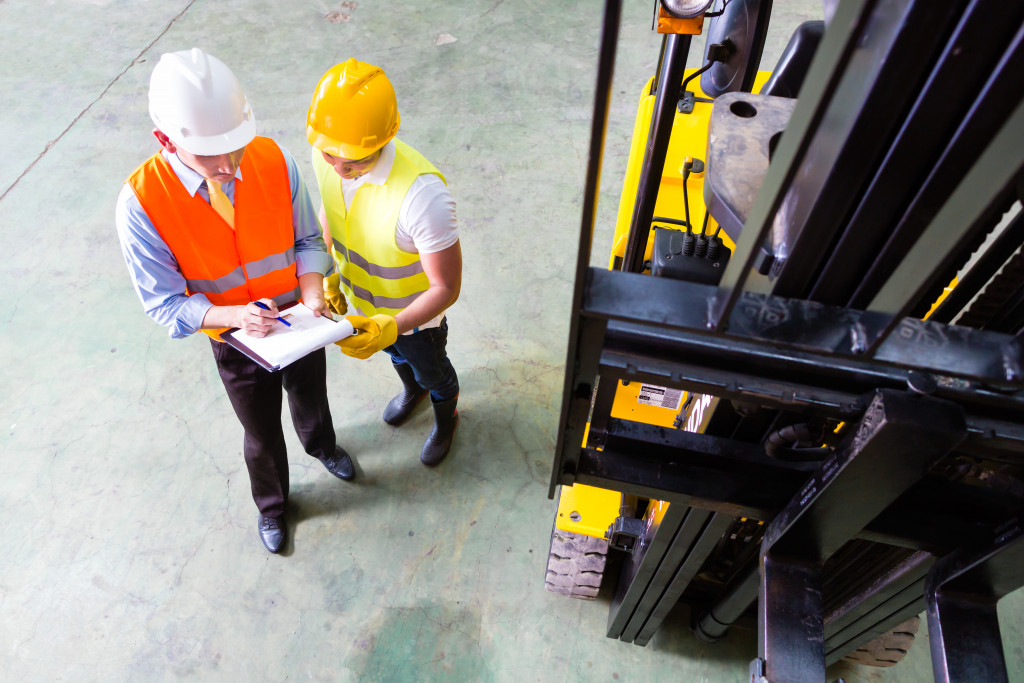- Clean and dry construction equipment before storage to remove any grime, dirt, or grease.
- Lubricate all moving parts for smooth operation and to reduce rust formation.
- Store equipment indoors on flat ground or pallets to reduce pressure on wheels or tracks.
- Regularly maintain equipment in storage to prevent damage or rust.
- Invest in protective solutions like covers, tarps, and storage bags to shield from outdoor elements.
Construction equipment can be quite an investment, and it is essential to ensure that it is well-maintained to keep it running smoothly for years to come. One way to achieve this is by proper storage.
As a construction equipment owner, how do you store your equipment? Neglecting proper storage can result in excessive wear and tear, damage, or theft. Here are some tips on how to properly keep your construction equipment.
Cleaning
Before storing your construction equipment for an extended period, the first thing is to clean it properly. Cleaning removes any grime, dirt, or grease that may have accumulated on the equipment while working.
Use a hose or pressure washer to wash the equipment thoroughly, and then use a brush or rag to clean the inaccessible areas. Once everything is spotless, dry the equipment thoroughly, including all crevices.
Protective Solutions
Investing in protective solutions not only ensures the safety of your equipment but also extends its lifespan. Construction equipment, in particular, is susceptible to damage due to its heavy usage and exposure to harsh environments.
That’s why it’s crucial to use protection materials for construction equipment, such as covers, tarps, and storage bags, to shield your equipment from outdoor elements like rain, wind, and UV rays. With the right protective solutions, you can have peace of mind knowing that your equipment is well-maintained and always ready to use when needed.
Lubrication
After cleaning, lubricate all moving parts to prevent rust, ensure smooth operation, and extend the lifespan of your equipment. Lubricating will depend on the type of equipment. Heavy machinery like excavators and backhoes may require more lubrication than smaller equipment like jackhammers or saws.
In addition, make sure to use the correct lubricants suitable for your construction equipment. Consult your manual or contact a qualified mechanic to determine which is best for your machine.
Proper location
Storing construction equipment in the open for extended periods can lead to rust, corrosion, and other damages. Therefore, storing equipment indoors is essential if you have an oversized garage or warehouse. Otherwise, consider keeping it in a storage facility or renting storage space. Indoors, keep the equipment on flat ground or pallets to reduce pressure on wheels or tracks.
Regular Maintenance
Proper storage does not end at cleaning and lubrication. Regular maintenance while the equipment is in storage reduces the possibility of damage or rust during downtime. Depending on the type of equipment, you may need to start and run the equipment occasionally to ensure that everything remains functioning correctly.
Anti-theft protection
Construction sites are a prime target for equipment theft. Construction equipment theft costs the industry billions of dollars every year. Perhaps, this is because construction equipment is often expensive and valuable, making it a good target for thieves.
Stealing can also be relatively easy because of a lack of monitoring and security on construction sites. As a construction site owner or manager, you want to ensure your equipment’s safety without compromising your work.
Enclose your Site

Fence your construction site to make it difficult for unauthorized personnel to get in. This helps to establish a secured area around your construction equipment. While a fence may not keep out determined thieves, it helps deter inexperienced and opportunistic criminals more likely to move on to easier targets.
Install Technology-Based Anti-Theft Devices
With the advancement of technology, several anti-theft devices are available in the market. These devices range from GPS tracking to immobilization systems. GPS trackers attached to equipment can help you track down stolen items quickly, while immobilizers can prevent thieves from starting or moving equipment.
Implement Staff-Based Security Measures
While technology-based security measures can go a long way, you still need people to manage and monitor them. You can employ or contract security personnel to watch over your construction site or assign personnel on-site to perform security checks overlapped with duties. Ensure your employees are trained to recognize suspicious activity and know how to respond to it.
Insurance
The final step to protecting construction equipment is to get insured. A good insurance policy protects your assets from theft, loss, or damage. It is essential to ensure that your policy covers your equipment, regardless of where it is located or stolen.
Final Thoughts
Proper storage is paramount to maintaining your construction equipment’s integrity and protecting your investment. Cleaning and lubricating the equipment, storing it in the right location, anti-theft measures, and regular maintenance are all critical aspects of proper storage. Following these tips can save money, promote safety and security, and ensure your equipment is always ready for work. Keep rust and damage at bay by investing in proper storage.





